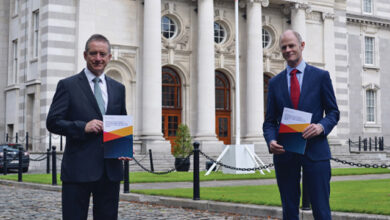Google’s Ed Parsons discusses his behind-the-scenes role
 As entrepreneurs generate an industry around spatial data applications, Google’s Geospatial Technologist, Ed Parsons, talks to Owen McQuade about its potential and how online developers can learn from the print media.
As entrepreneurs generate an industry around spatial data applications, Google’s Geospatial Technologist, Ed Parsons, talks to Owen McQuade about its potential and how online developers can learn from the print media.
Google’s approach to spatial data reflects how the company has used cloud computing and big data internally, Ed Parsons remarks as he takes stock of how its business has grown to date.
As the corporation’s Geospatial Technologist, Parsons ‘evangelises’ its sweeping mission to “organise the world’s information using geography” through Google Earth and Google Maps, both in their sixth year of operation.
“It’s been within our DNA from the very beginning,” he comments. “We started off with the unfortunate position of being a young company with very few legacy systems so almost everything we do, in effect, is in the cloud. And because of the types of data that we deal with, from a geospatial point of view but also in a general business, we’re dealing with big data all of the time.”
Google frequently stores and analyses petabytes of data (1015 bytes), hence the importance of building platforms that can access that information either within the organisation or externally. This appears to the user “in a very simple, straightforward way” but those platforms have had a “huge impact” among geospatial experts, who struggled for 30 years to make that data meaningful for people.
“I think one of the things that Google brought, when it started out in making geospatial information available in 2005, was to present a platform that took all of that complexity and hid it behind something that was very simple and something that was very accessible,” he explains.
Placing Google Maps content on websites requires only a few lines of code rather than long negotiations with rights holders. “And that’s the position we have to be in with all of our information, whether it’s geospatial or not,” he adds. “It’s all about accessibility.”
While Google wants to provide free and open information at the point of use, it has to pay for access rights and licensing in some cases.
He sums Google Earth up as “really about providing a window into geospatial information for people to explore” while Google Maps is “very much about doing a particular task” e.g. finding directions and distances.
Google Earth, Parsons continues, involves “going and having a look and exploring the information from different sources of data, all concatenated in one particular area.” Its popularity is demonstrated by the scale of user-generated content, from adding geocode photographs taken on holiday to storing and displaying scientific datasets on global environmental change.
“In some ways, it’s like a web browser but for geospatial information,” he comments.
The very suggestion of ‘organising the world’s information’ indicates Google’s global level of influence and the vast amount of personal information which it handles. Gmail itself has around 350 million customers.
As for the way ahead, he expects the application of geospatial data to become “more and more pervasive” even though customers don’t know that they are releasing that information about themselves.
“A lot of the geospatial technology that my part of Google develops sits behind the normal Google search page and you, as a user, are not aware that you are using geospatial information,” he comments.
When a search is made, the IP address of that computer is matched to a specific location. The word ‘plumber’, for example, will generate results for local tradesmen, rather than a random list of those around the world.
“So you’ve not explicitly asked for that information. You’ve not made that geospatial query but behind the scenes, we’re doing that,” he comments. “And I think that’s where all of this information that is being created and is being shared ultimately will be used, but it might not be explicitly about geospatial information. It will become part of other workflows where it’s beneficial.”
That said, one of the problems he finds with the Inspire Directive (in force since 2007) and similar recent spatial data infrastructures is that they have been developed from the publishers’ point of view rather than that of the user.
Taking a leaf from the literary world, he explains: “When you’re writing a book, you don’t just drop down a load of words and that’s it. It goes through an editorial process. You work on the narrative of your novel and I think, in terms of the data that we publish, we need to think much more about it [being] a publishing a step.”
The key question is whether the information is relevant to the user and how it can be accessed in a relevant way.
Parson surmises: “The raw data is important and people will get access to the raw data if that’s appropriate but often we need to think about simplifying the data that we publish. We need to think about: ‘Well, who is the user community? What type of data will they need as opposed to what data have I been [using] internally?’”
Ed Parsons is based in Google’s London office and was previously the Ordnance Survey of Great Britain’s first Chief Technology Officer in its 200-year history. The mindset change was: “Rather than giving someone a map, we give them the byte-stream of co-ordinates from which they can create their own map.” Before then, he was EMEA Applications Manager for Autodesk’s geographical information systems division.
After the “culture shock” of joining Google, he settled in and has now worked there for nearly four years. He compares it to being back at university: “It’s a much less structured, much more informal way of operating. Very enjoyable. Very much a meritocracy.” Married with two children, he has a masters in applied remote sensing from Cranfield Institute of Technology. Ed blogs at www.edparsons.com





